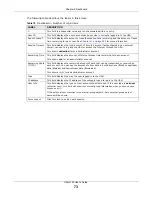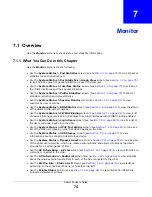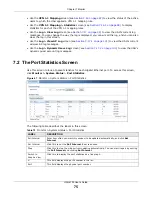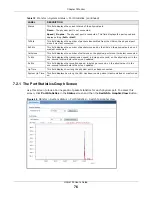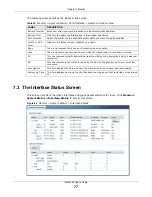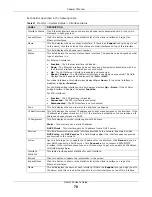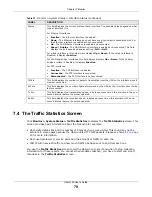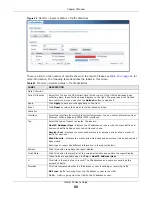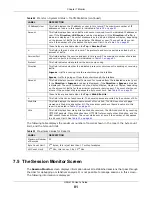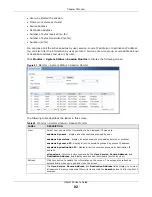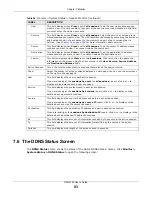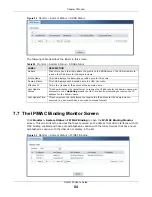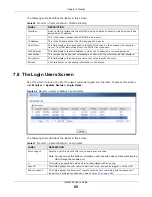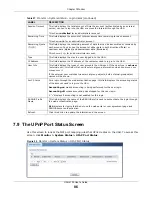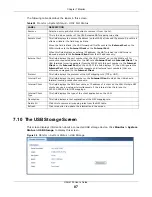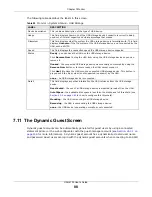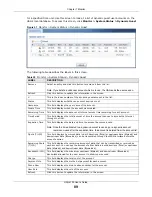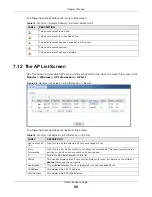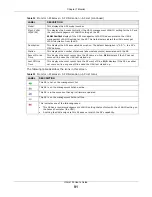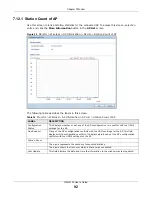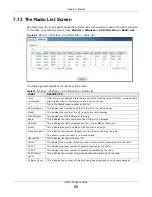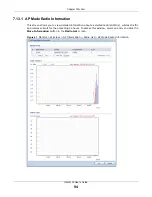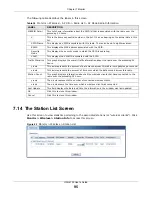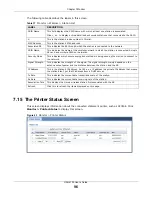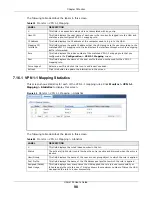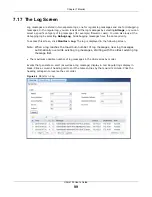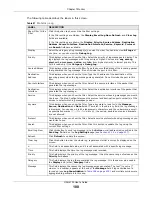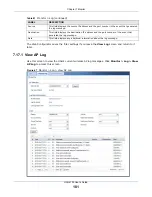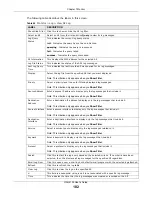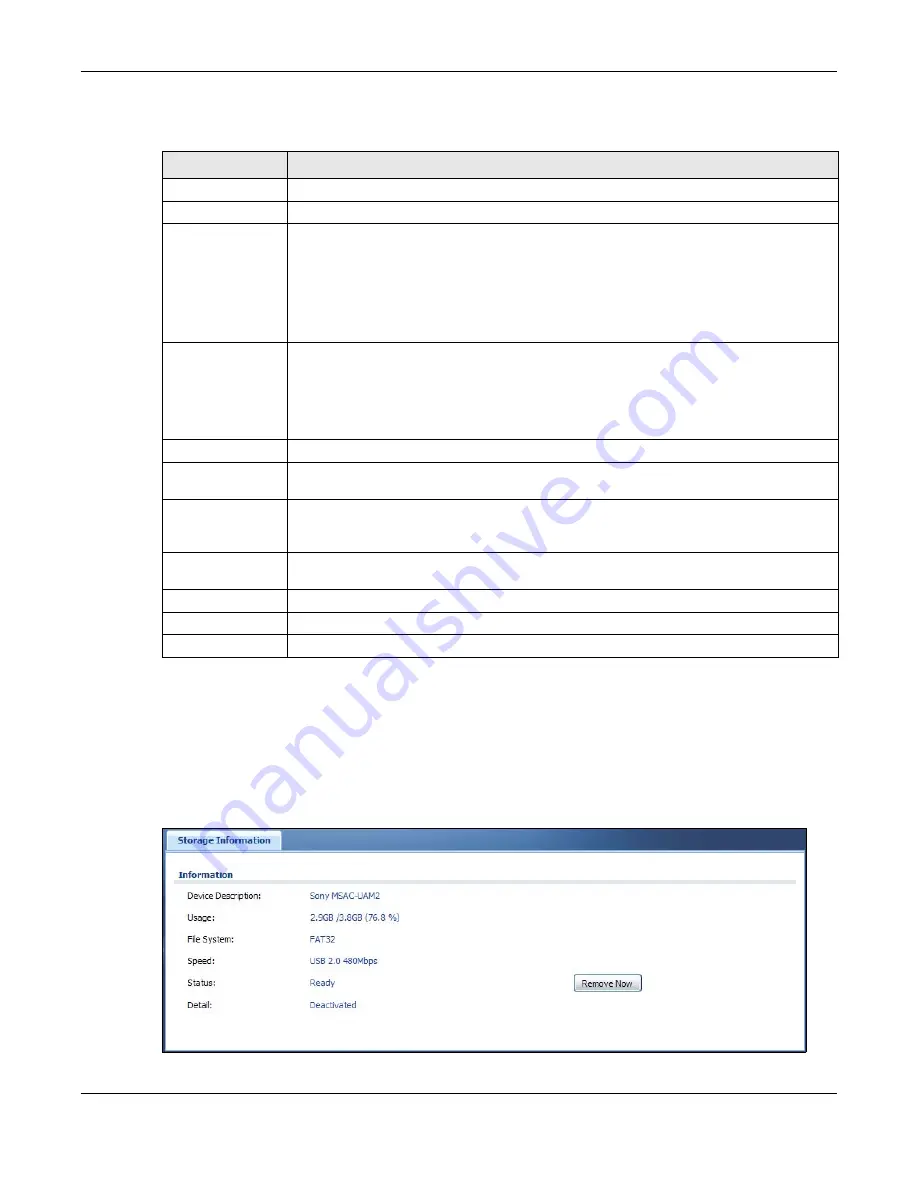
Chapter 7 Monitor
UAG4100 User’s Guide
87
The following table describes the labels in this screen.
7.10 The USB Storage Screen
This screen displays information about a connected USB storage device. Click
Monitor > System
Status > USB Storage
to display this screen.
Figure 56
Monitor > System Status > USB Storage
Table 28
Monitor > System Status > UPnP Port Status
LABEL
DESCRIPTION
Remove
Select an entry and click this button to remove it from the list.
#
This is the index number of the UPnP-created NAT mapping rule entry.
Remote Host
This field displays the source IP address (on the WAN) of inbound IP packets. Since this is
often a wildcard, the field may be blank.
When the field is blank, the UAG forwards all traffic sent to the
External Port
on the
WAN interface to the
Internal Client
on the
Internal Port
.
When this field displays an external IP address, the NAT rule has the UAG forward
inbound packets to the
Internal Client
from that IP address only.
External Port
This field displays the port number that the UAG “listens” on (on the WAN port) for
connection requests destined for the NAT rule’s
Internal Port
and
Internal Client
. The
UAG forwards incoming packets (from the WAN) with this port number to the
Internal
Client
on the
Internal Port
(on the LAN). If the field displays “0”, the UAG ignores the
Internal Port
value and forwards requests on all external port numbers (that are
otherwise unmapped) to the
Internal Client
.
Protocol
This field displays the protocol of the NAT mapping rule (TCP or UDP).
Internal Port
This field displays the port number on the
Internal Client
to which the UAG should
forward incoming connection requests.
Internal Client
This field displays the DNS host name or IP address of a client on the LAN. Multiple NAT
clients can use a single port simultaneously if the internal client field is set to
255.255.255.255 for UDP mappings.
Internal Client
Type
This field displays the type of the client application on the LAN.
Description
This field displays a text explanation of the NAT mapping rule.
Delete All
Click this to remove all mapping rules from the NAT table.
Refresh
Click this button to update the information in the screen.

